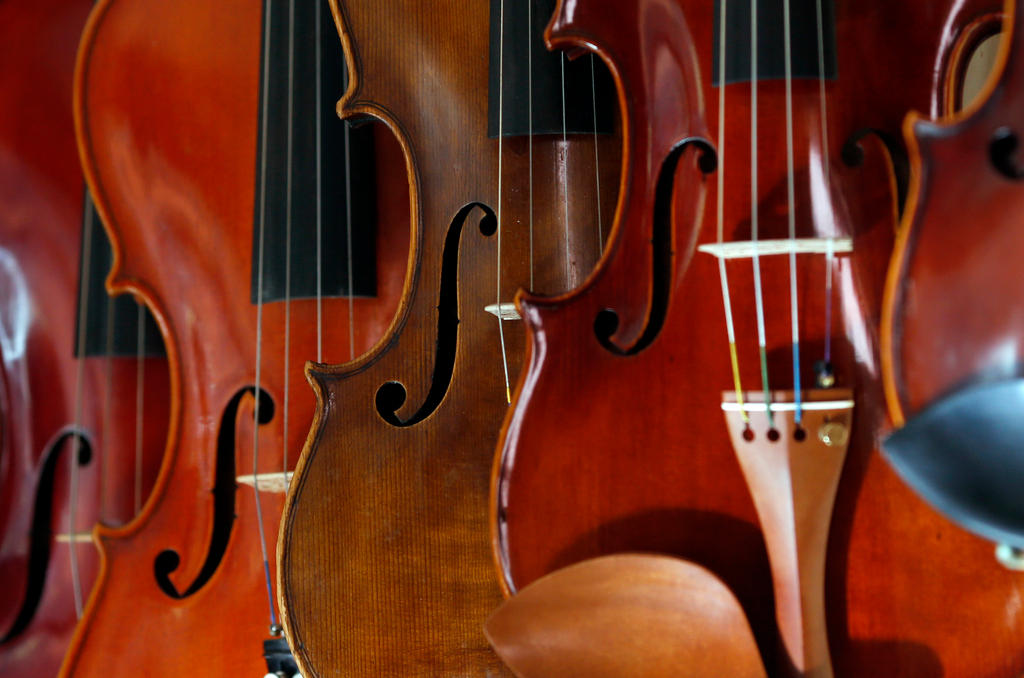
Swiss create sustainable – and legal – ebony substitute

Researchers have developed a way to modify domestic Swiss wood species to mimic the acoustic properties of the endangered tropical hardwood ebony, long prized as a key material in violin-making.
The start-up, Swiss Wood Solutions, was founded by researchers from the Swiss Federal Laboratories for Materials Science and Technology (EMPA) and the federal technology institute ETH Zurich. It uses sustainably grown Swiss maple in its process, which involves soaking, drying and then pressing the wood with a heat press. The end product is a wood with similar acoustic properties to prized tropical woods like ebony, used in violin and viola-making, or grenadilla, used to build clarinets and oboes.
Despite strict trade regulations, ebony is an endangered wood, according to the Convention on International Trade in Endangered Species of Wild Fauna and Flora (CITESExternal link). Its importation is prohibited unless its legal provenance can be officially proven, and musical instruments containing ebony may be confiscated if such proof cannot be produced.
It’s an issue that affects musicians as well as instrument-makers and vendors, since ebony’s hardness and acoustic qualities make it a prized material for the fingerboards and tailpieces of quality violins. Fortunately, the Swiss Wood Solutions process allows the researchers to tweak the maple’s density, colour or sound conduction properties, optimising it for a particular instrument.
“Our technique enables us to determine these parameters ourselves, which means a violin-maker can fine-tune the instrument very precisely,” the start-up’s president, Olivier Kläusler, said in an EMPA statement on Tuesday.
Some alternatives to ebony already exist, such as composite synthetic wood or carbon fibre. But professional musicians who tested the start-up’s product reported that it was virtually as good as the real thing.
Although the production costs of “Swiss ebony” are already competitive with those of its natural counterpart, the researchers are already working on bringing down the price, and making the process more environmentally friendly. When these hurdles are cleared, they hope one day to use the process for other materials besides instruments, such as watchmaking parts, pool cues or knife handles.

In compliance with the JTI standards
More: SWI swissinfo.ch certified by the Journalism Trust Initiative




























You can find an overview of ongoing debates with our journalists here . Please join us!
If you want to start a conversation about a topic raised in this article or want to report factual errors, email us at english@swissinfo.ch.